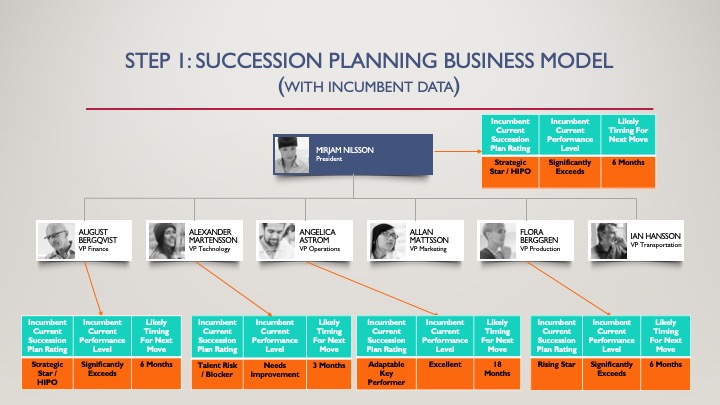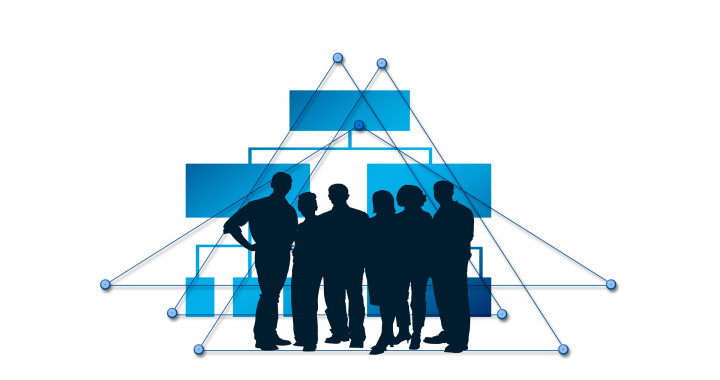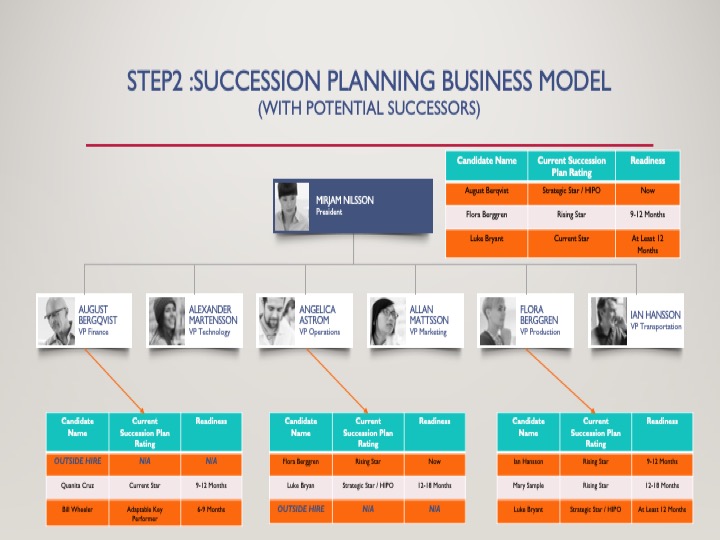When considering a succession plan for your business, there are a number of steps you can take to ensure you have a solid, well thought out plan. I’ve broken the steps into a 3-part series and included links to connect you with more information. In Part 1 of this series, we discussed the importance of Succession Planning and the 9-Block People Matrix. Today, we will be discussing the second component of the Succession Planning Process: The Succession Planning Business Model.
Succession Planning (or Future Desired State) Business Model:
The Succession Planning Business Model starts with the use of the company’s existing organizational chart that includes all current positions in a cascading fashion.
The Succession Planning Business Model, a modified organization chart, is used to identify candidates for critical positions within the organization. The model usually starts with the top positions in the organization and removes the existing subordinates for those positions and functions. It is done in two steps.
Step 1: Identify all critical positions and assess incumbents
Identify all critical positions within the organization and remove the subordinate relationships that are not critical to your business. This is done for as many levels as is needed to capture each of those critical positions within the company. Critical positions can range from the President down to a highly skilled specialized individual contributor. Don’t make the mistake of focusing on the high-level positions only.
Then, assess these three critical data points for each incumbent:
- succession plan rating from the 9-Block People Matrix. The Matrix is used to plot an employee’s present-day performance with his/her potential.
- the incumbent employee’s current performance rating, and
- the likely timing associated with the incumbent’s next move.
Once you have your assessments put together, superimpose them on your Succession Planning Organization Chart (Figure 1).
 Figure 1. The incumbents’ data alongside the critical positions chart
Figure 1. The incumbents’ data alongside the critical positions chart
Not everyone in a leadership role is a “superstar” as indicated with the VP of Technology in Figure 2, where the incumbent is identified as a Talent Risk / Blocker. This employee is most likely going to be placed on a performance improvement plan and could be transitioned from the organization if performance doesn’t improve.
Step 2: Compile a list and assess potential successors for each position
Create a three-column table for those critical positions. These columns will include
1. name of successor candidates,
2. current succession plan rating from the 9-Block People Matrix for each candidate, and
3. candidate’s readiness level for the move into that position.
This data table is then positioned on the Succession Planning Business Model (Figure 2).
Figure 2. Potential successors placed on the critical positions’ organization chart
You’ll notice not every position has an immediate backfill for the role (see examples where an external hire is needed in Figure 2). In these cases, the next likely candidate for the role may be an external hire. External hires should be the highest priority need for the department head, Human Resources and the organization’s management team.
An important note: The Succession Planning Business Model also does not need to reflect a current organization, rather it can be a representation of a future state for which the company may be transitioning towards.
Process considerations
- Like with the use of the 9-Block People Matrix, the Succession Planning Business Model is usually completed by a department head for the group that is being evaluated and matched against an existing Succession Planning Business Model.
- Like performance goals and performance reviews, the succession planning documents change from year to year. Some employees may have been promoted within the year, some may have completed stretch assignments, and still others may have retired or left the company. As such, the succession planning process needs to be treated like any other critical people-related process that gets reviewed annually.
- It is important to highlight that all discussions regarding succession planning need to remain confidential as with any other company-sensitive material.
- Finally, all discussions regarding succession planning should be facilitated by a bias-neutral individual in order to detect alternate sides of situations or opportunities. It is for this reason that many companies engage the assistance of an outside facilitator to conduct and manage these meetings.
Coming up: Individual Succession Plan Profile
The last part of this series used in the Succession Planning process is the Individual Succession Plan Profile and will be discussed in the next post.
If you would like for me to email you this three-part series or if you have questions with any of the three Succession Planning Processes; the 9-Block People Matrix, the use of the Succession Planning Business Model, or the Individual Succession Plan Profiles, please contact me at Paradise Workplace Solutions.
Paradise Workplace Solutions, LLC works with business owners to improve productivity and profitable growth by aligning people strategies to the company’s business plan.


